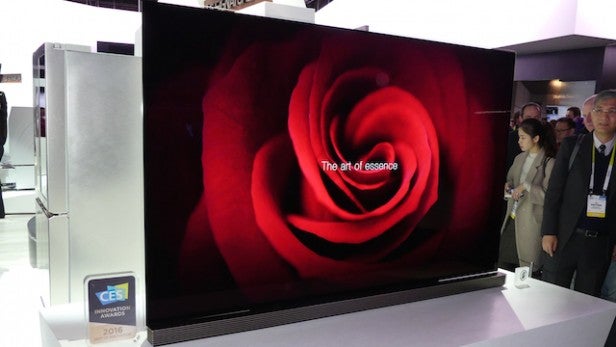Are Samsung and LG cheating TV energy tests and costing us billions?

According the NRDC in the US, Samsung, LG and Vizio are all cheating when it comes to the standarised energy consumption tests their TVs are subject to prior to going on sale.
In both Europe and the States, televisions are required to be labelled with an energy consumption rating, ranging from A+++ (allegedly the most energy efficient) to G (the worst).
However, according to independent measurements carried out by the Natural Resources Defense Council in America, energy consumption is usually much higher than indicated when you actually use a telly at home, with consumers up to $1.2bn (£923m) worse off due to extra energy expenses.
The NRDC said that because TV manufacturers are familiar with the testing methodology, they were able to tweak their sets prior to the standard test sequences to gain higher marks.
In its independent investigation, the NRDC tested TVs from Samsung (who has been accused of similar skullduggery in the past), LG and Vizio.
Noah Horowitz, senior scientist and director at the NRDC’s Center for Energy Efficiency Standards, commented:
“It appears that some major manufacturers have modified their TV designs to get strong energy-use marks during government testing but they may not perform as well in consumers’ homes.
“These ‘under the hood’ changes dramatically increase a TV’s energy use and environmental impact, usually without the user’s knowledge.
Specifically with regards to Samsung, LG and Vizio, the report concluded that:
“Samsung, LG, and Vizio also have designed their TVs to disable energy-saving features whenever users change the main picture setting, doing so with no or little adequate on-screen warning, which can boost energy use by 50 to 100 percent, or more.”
Yikes.
The NRDC added that the testing metholodogy itself, as laid out in the US by the Department of Energy, was outdated and flawed in light of new standards like Ultra HD and HDR.
Chris Calwell, principal at Ecos Research, added:
“DOE should update its test method with more realistic video content, including video encoded in high dynamic range (HDR), to ensure that the resulting measurements are closer to what consumers would actually experience when using their TVs at home.”
It’s a sentiment that TrustedReviews Home Technology Editor Ced Yuen agrees with:
“Energy consumption tests are a waste of time in their current state. They simply don’t reflect the complexity of TVs today.
“In the last four years alone, we’ve witnessed the death of Plasma and the rise of LCD, along with the birth of smart operating systems, 4K resolution and high dynamic range. There are far too many variables, and manufacturers can all too easily make their TVs look more efficient than they are in regular use.”
The NRDC notes that none of the implicated manufacturers disputed the findings, but Samsung has issued a statement disputing the report:
“Samsung firmly rejects the accusation that we are misleading consumers. Our ENERGY STAR rating is based on the default setting of our TVs. The majority of users stay within the default viewing settings through the lifetime of their television.”
LG supplied TrustedReviews with the following statement:
“Contrary to the claims made by the US-based National Resources Defense Council (NRDC) on television energy use, LG does not and never has designed its TVs to deliver false energy efficiency results. LG is confident that our TV products are delivering energy efficiency in real world use as we are in complete compliance with the United States Department of Energy’s procedures for TV energy testing. For the record, there is no industry consensus as to what is considered “normal viewing.” For now, the International Electrotechnical Committee (IEC) test loop is the standard that the industry must follow. The NRDC’s test loop and the IEC’s test loop– which LG uses — yield vastly different results. We look forward to working with the US Department of Energy and other stakeholders to develop a new test loop going forward but until then, our TV products are designed to meet the US Department of Energy’s guidelines for energy efficiency.”
It continued: “That said, LG is currently in the process of implementing software for consumer notifications on 2015 and 2016 TV models which inform customers that changing picture modes may impact energy consumption as well as allowing consumers to turn on energy saving features in various picture modes.”
The full NRDC report, which may make for fascinating reading for TV boffins, can be found here.
Related: Best TVs 2016
Watch: All you need to know about TVs
Do you believe TV energy consumption ratings? Let us hear your thoughts in the comments below.

